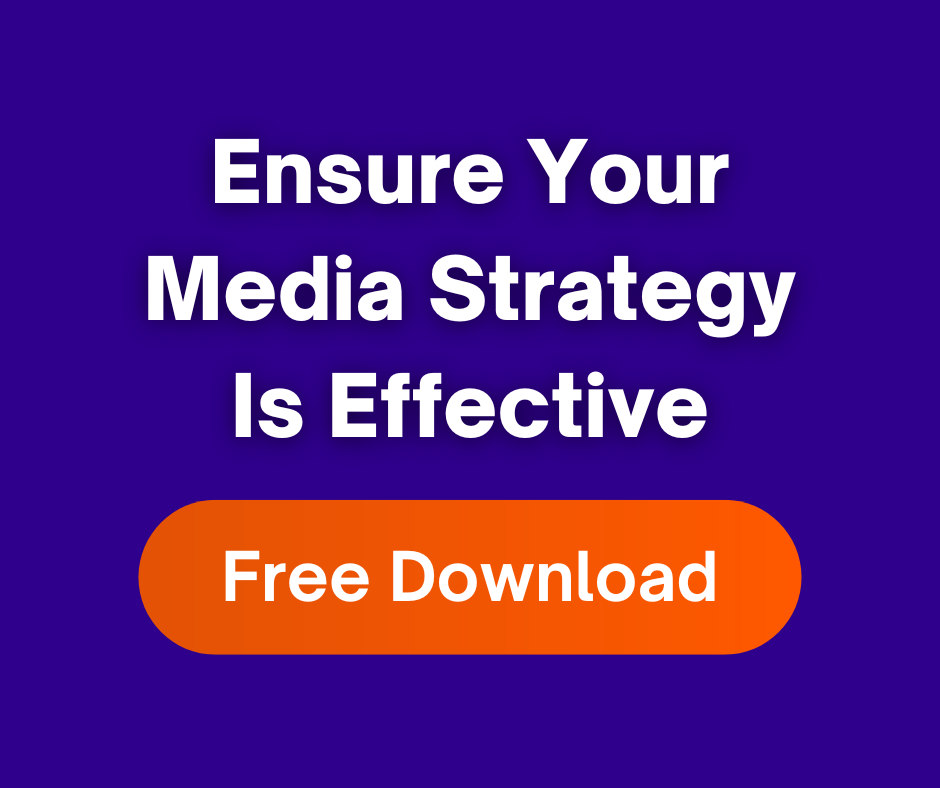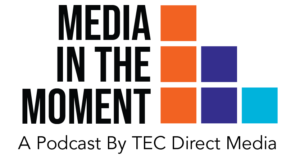Digital audio advertising is attractive as it effectively reaches consumers on multiple devices and platforms. Edison Research and Triton Digital’s ‘The Infinite Dial 2020’ survey found for the first time, that Americans are spending more time daily on digital devices than on traditional, more linear devices.
This shift to digital listening has been on a steady, but slow, increase and was not expected to surpass linear sources until at least 2021. Disruptions in listening habits due to COVID-19, such as the shift away from in-car and at-workplace listening to at-home listening, has accelerated this wave.
Direct response advertisers are no longer the sole supporters of digital audio content. D2C brands have been taking advantage of this top performing acquisition channel since way before Spring 2020. As reach, scale and targeting abilities evolve, so too have the list of emerging and established brands investing here. Want to learn why these advertisers are paying attention? Keep reading.
What is Digital Audio?
Audio programming is delivered via terrestrial radio, or over-the-air (OTA) radio stations. Digital audio, therefore, would be any aural content distributed via digital means. So, think streaming radio, music or podcasts on your mobile device, smart TVs/speakers or in your car.
Why Use Digital Audio Advertising?
We include digital audio in our media strategy because audio messages provide value and offer a personalized experience. Consumers are more engaged when listening to digital audio because they’re curating very specific content driven by their own tastes. This content is readily available on multiple devices like mobile apps and smart speakers. This is helping to grow digital audio’s reach.
A digital audio advertising strategy can fit nicely into most media plans. It’s a cost-effective, high-frequency medium that is measurable and highly targetable (audience, location, etc.). For example, we recently had to reach listeners in a specific county (not an entire market). Implementing a digital audio strategy allowed us to reduce media waste. We also reached desired listeners more effectively, compared to using a broader reach terrestrial radio buy.
AM/FM radio is still the audio form of choice for Americans while driving/riding in cars. But consumers are also tuning into streaming music apps and podcasting. Over the next year, commuting habits will change, and some employees may continue working from home. We expect research to reflect a shift here as well.
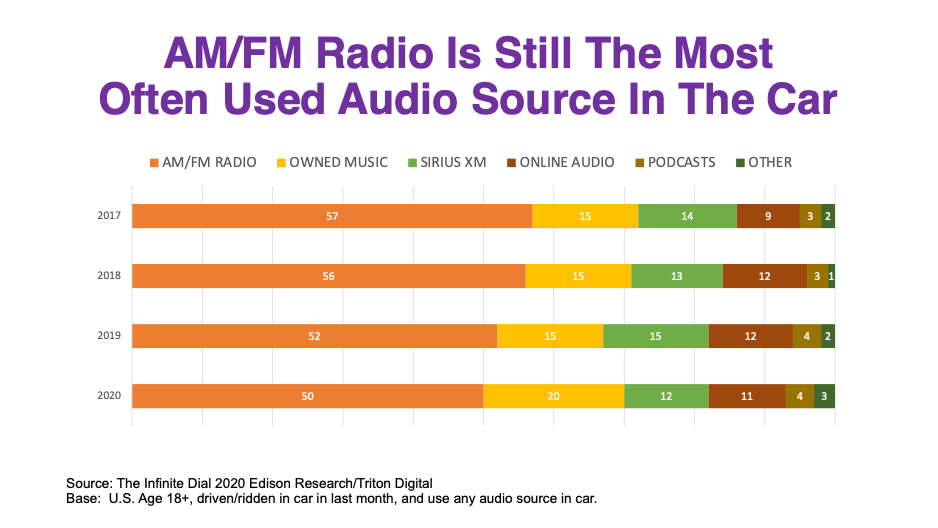
Who Are the Digital Audio Leaders?
Where you listen to audio still plays a role. However, this is evolving as availability and awareness of each digital option improves. Streaming music services, Sirius XM and podcasts have continued to grow in popularity and capture listeners’ attention.
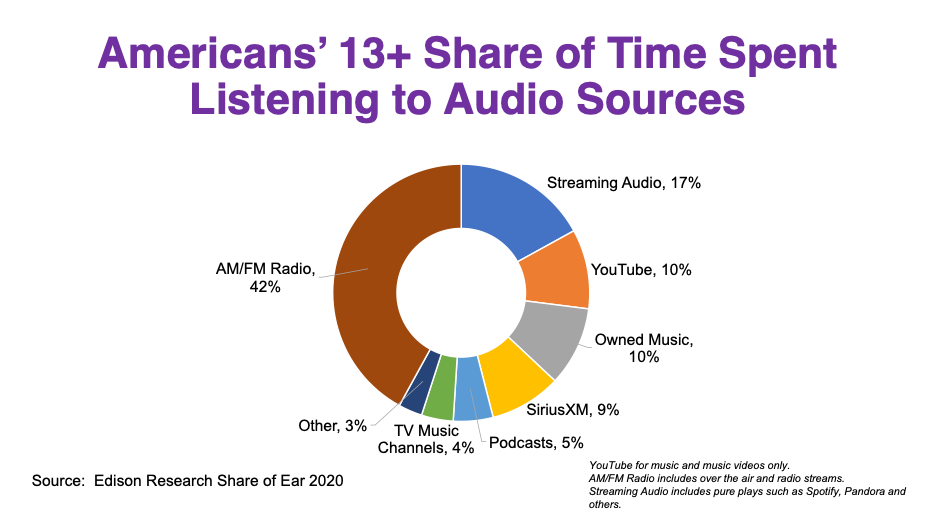
Of the streaming audio distributors, Spotify and Pandora are capturing the largest audience. Listeners are beginning to show more preference for the former. As adoption increases, streaming services are also playing a role in the growth of podcasting.
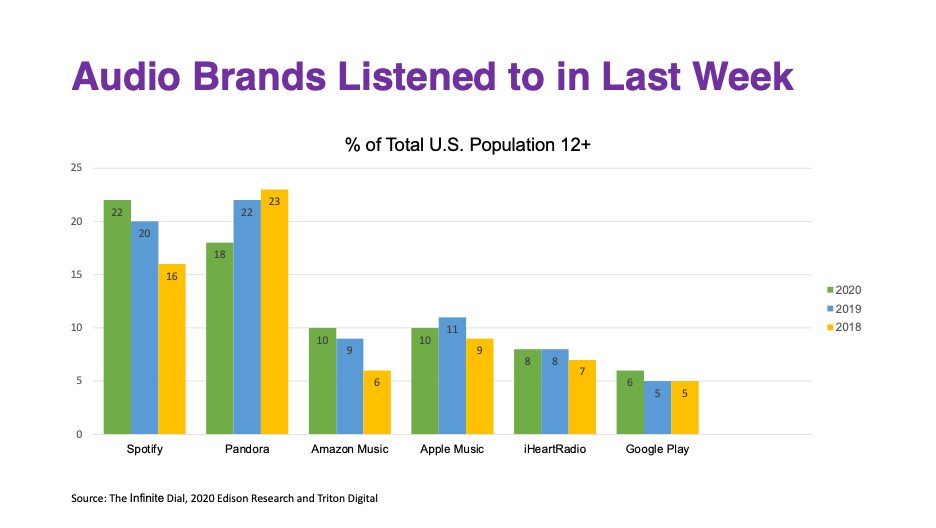
Shortly after SiriusXM completed its 2019 purchase of Pandora, it removed the premium paywall for access via its mobile app. This allowed all basic subscribers to take programming outside the car and listen via connected devices, including smart speakers. SiriusXM saw its Self-Pay Net Subscriber Additions grow by 264,000 in Second Quarter 2020. The service continues to ramp up new streaming-centric and on-demand programming. Popular talent such as Gayle King and Bruce Springsteen have been added to provide new content.
The latest Infinite Dial study found that more than a third of Americans are listening to podcasts regularly every month. All age groups are experiencing an increase in listenership. 12 to 34-year-olds are making up the largest segment of regular podcast listeners.
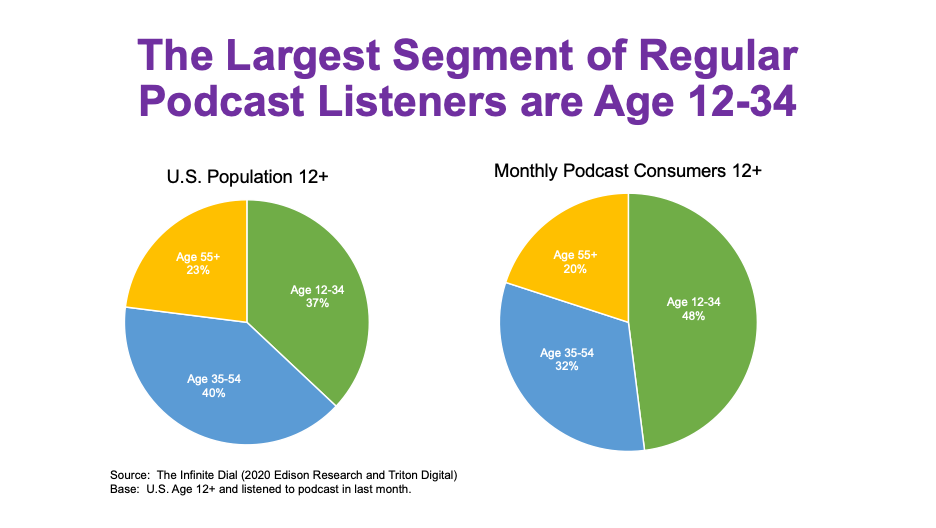
Brand marketers are increasing their media investments in podcasts as placement in the content can increase brand awareness. Podcasts tend to offer a more active listening environment, compared to passively listening to music. Early on, podcasts about music tended to be some of the most popular.
How to Get Started Advertising in Digital Audio
Smart marketers are following digital audio trends like these and finding ways to use digital audio advertising in their campaigns and promotions. We’re here to make sense of it all and recommend what options work best for your target audience and budget. These recent case studies show how we’ve helped other clients harness this media.
Have a campaign you need to get off the ground? Tell us more about your project below.
